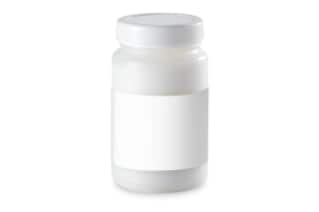
|
Separation Mode |
GPC/GFC/SEC |
|
Detection Method |
UV, RI/ELSD |
|
Formulation |
Solid |
|
Storage Condition |
4C (Fridge) |
|
System Type |
LC |
|
Shelf Life |
36 Months |
|
Shelf life upon reconstitution |
1 Week |
|
Shipping Condition |
Ambient |
|
Tolarence |
10% (Mp) |
|
Mass |
1 g |
|
Type |
Calibration |
|
UNSPSC |
41116107 |
|
Application |
Gel Permeation |
|
Product Type |
Standards |
|
Units per Package |
1 pk |

Polystyrene Standard 3,600,000
A single GPC standard (Gel Permeation Chromatography standards) for determining the molecular weight of 3,600,000 Da of polystyrene. Standards for polystyrene calibration that you can use to characterize or validate your chemical study. These excellent, tested standards provide you confidence in your outcomes.
Our reference materials' polymers were created particularly to give studies with unidentified molecular weight data. You can rely on the traceability of our performance-based reference materials whether you choose a single standard or a cocktail mix. A special GPC standard for calculating molecular weight (Gel Permeation Chromatography standards). Polystyrene at a Da of 3,600,000. To characterize or validate your chemical investigation, you can employ standards for polystyrene calibration. This group of excellent, tried-and-true standards provides you with faith in your results.
Waters is aware that only technologies with exact calibration can generate accurate and trustworthy data. With the help of the well-characterized polymer standards and reference materials offered by our Waters products, you can focus on the results and keep up production. Waters provides a range of well-characterized polymer standards, including kits and individual standards, to fulfill your specific requirements. Both aqueous and non-aqueous applications have standards available.
With the correct lab materials, your productivity can go up. Guards, vials, and elution plates are among the items on our website that are compatible with the Polystyrene Standard 530. On our website, you may shop for lab equipment and get in touch with us with any inquiries. You can talk to a staff member at one of our many offices across the world about your questions and concerns.
We recommend that you also look into AutoPurification System Standard; The portfolio of Quality Control Reference Materials is a special assortment of standards and mixes. Before analyzing crucial material, these items enable the user to assess and benchmark their chromatography equipment. All of the goods in the portfolio were particularly created using the scientist's knowledge at Waters. Three substances—Thionin, Thioflavin, and Crystal Violet—are included in the AutoPurification Dye Standard. By fraction collection, this standard mix is utilized to verify the benchmark performance of a preparation/purification system. This specific QCRM was created with the user's ability to confirm proper fraction collection in mind. When a system is first installed and used, or if there have been changes to it, it is extremely valuable to run this test.
What Function Do Phenolic Compounds Serve?
Phenolic chemicals have a crucial role in defense reactions such as anti-aging, anti-inflammatory, antioxidant, and anti-proliferative effects from a human physiological perspective.